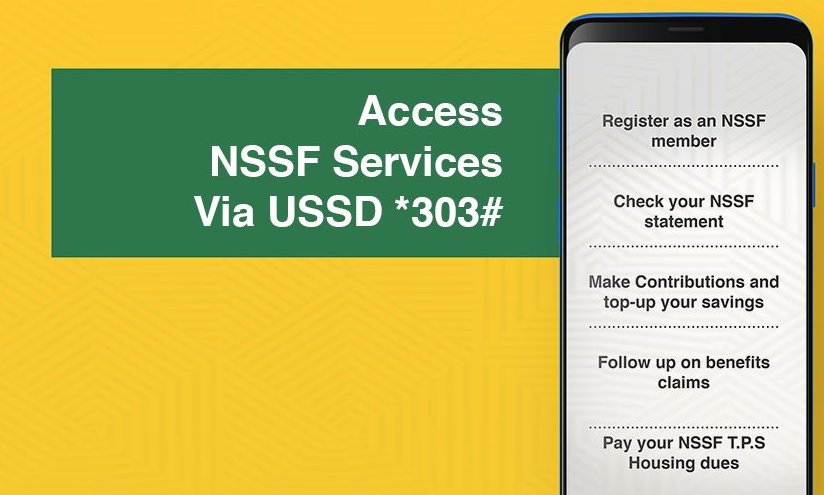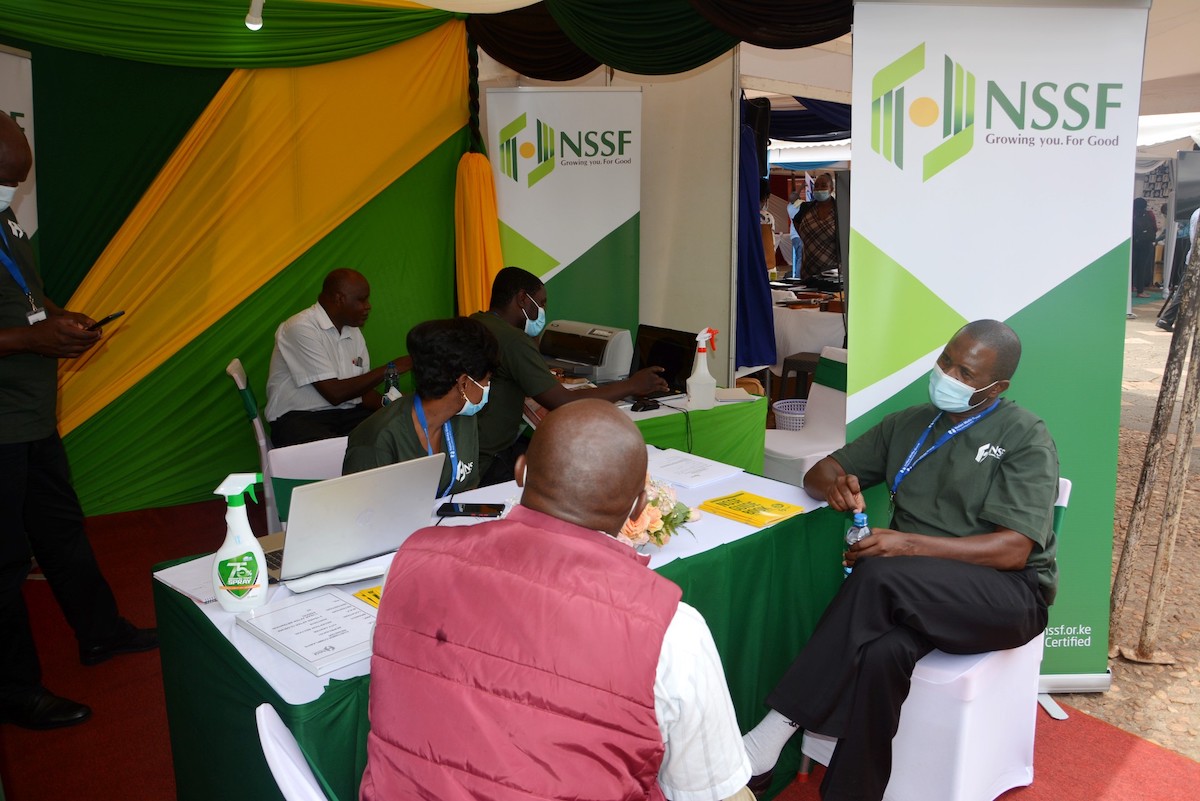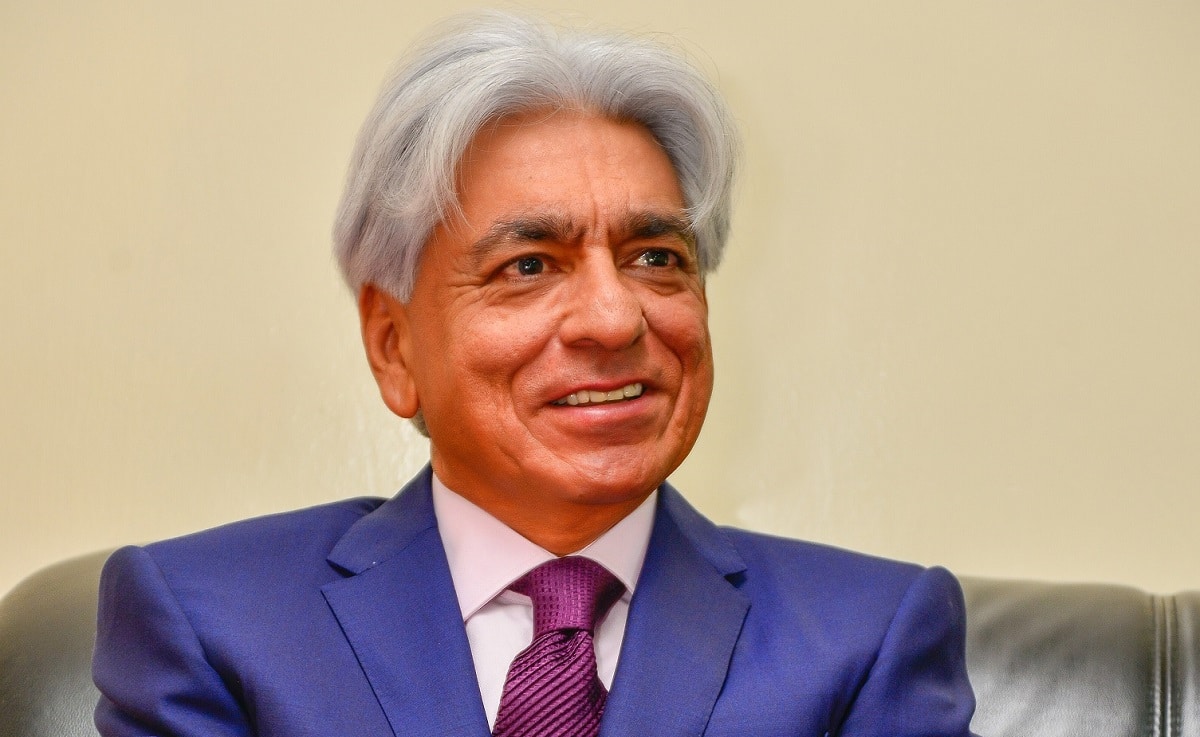The National Social Security Fund (NSSF) has evolved considerably from its inception in 1965 through an Act of Parliament Cap 258 of the Laws of Kenya. The Fund initially operated as a Ministry of Labour Department until 1987, when the NSSF Act was changed into a State Corporation managed by a Board of Trustees. The Act was created as a mandatory national scheme with the primary goal of providing Kenyans with basic financial security benefits upon retirement. The Fund was established as a Provident Fund, with benefits in the form of a lump sum.
The Act was later revised in 2013 as NSSF Act No.45 of 2013 (The National Social Security Fund (NSSF) Act No. 45 of 2013), in light of concerns regarding the adequacy of the framework and contributions to ensuring retirees have sufficient financial resources in their old age. It was assented into law on 24th December 2013 with an effective date of 10th January 2014 but was suspended in the same year. The primary goal of the act was to;
- Broaden the NSSF’s benefit coverage, range, and scope,
- Improve the adequacy of benefits paid out of the scheme by the Fund,
- Incorporate self-employed individuals under the coverage of this Act to increase their financial security,
- Provide a full opt-out at Tier II level of contributions for employers who have or are contributing to pension schemes approved and registered by the Retirement Benefits Authority, and,
- Strengthen NSSF’s corporate governance.
Having been non-operational since 2014, the NSSF Act No. 45 of 2013 was revived in September 2022 but was declared unconstitutional after the court held that;
- The Act dealt with finance matters affecting county governments, which made it paramount for the Senate to be involved in its enactment,
- It was unlawful to require citizens to register with the National Social Security Fund (NSSF) in order to enjoy public services,
- The participation of the Cabinet Secretary for Labour and Social Protection in approving the salary of the NSSF’s Board of Trustees was unlawful because it contradicted the Salaries and Remuneration Commission’s constitutional authority,
- The Act’s provision of a monopoly on pension and social security services in Kenya was unconstitutional, and,
- Mandatory NSSF registration and contribution was unconstitutional since it violated employees’ right to pick their pension arrangements.
After the ruling, NSSF appealed the decision in the court of Appeal in February 2023 and it was held that;
- The Labour Court lacked jurisdiction to consider the case because the central issue was the legality of a legislative process rather than an employment dispute, and,
- The Labour Court was incorrect in concluding that passage of the Act required the involvement of the Senate. However, the Act’s provisions did not fall under county government functions, the Senate was not obliged to participate.

The ruling meant that the NSSF Act No. 45 of 2013 repeals the previous NSSF Act (Cap 258) and introduces a new Pension Fund and Provident Fund (New Provident Fund) to replace the previous Provident Fund (known as the Old Provident Fund), which is now closed. The classifications can be defined as;
- Pension Fund: A retirement plan that allows participants to access only a third of their benefits at retirement, with the remaining funds going towards buying an annuity from insurance companies or authorized issuers. By acquiring an annuity, the retiree transfers a lump sum to the insurance company in exchange for the insurance company providing the retiree with periodic payments throughout the duration of the contract, and,
- Provident Fund: A retirement plan in which members are paid the total amount of savings plus the interest accrued over time.
The new provision of a pension fund gives a sense of security as a retiree is guaranteed regular payments at retirement. There is therefore no risk of spending it all in one go with a lump sum payout. Other benefits under the new Act include;
- An invalidity pension: The benefits are paid to members who are certified to be permanently incapable of working because of physical or mental disability. Members who are at least 50 years of age and suffer from a partial incapacity of a permanent nature that prevents them from undertaking employment are also eligible,
- A survivor’s pension: This benefit is paid to the dependents/relatives of a deceased member,
- An emigration benefit: Eligible to members emigrating from Kenya to a country which is not a member of the East African Community, without the intention of returning to reside in Kenya, and,
- A Withdrawal Benefit: Members are eligible for this benefit if they are at least 50 years of age and they have retired from regular paid employment.

Key to note, both the invalidity and survivor’s benefits offer additional benefits provided the member has made a minimum of 36 months’ contributions. The Tier I contributions are increased to allow for half of lost potential service (due to early ill health retirement or death), subject to a limit.
SPECIFICS
- Relevant Guidelines under the NSSF Act (No. 45 of 2013)
Membership: According to the Act, any employer who hires one or more people under a contract of service must register with the Fund as a contributing employer and enrol the employees as members of the Fund. However, employers who had already registered with the NSSF were not required to re-register under the new Act. Importantly, every employee should be listed with the NSSF. Any employer who fails, neglects, or refuses to register under this provision commits an offence and is subject to a fine of up to Ksh50,000.
Contributions: The social security contributions in respect of an employee increased from a flat rate of Ksh200 per month to a total contribution of 12% of Pensionable Earnings distributed evenly between employer and employee (6% by employers and 6% by employees). The Act defines pensionable earnings as all remuneration owed to an employee that is not subject to fluctuation and is the lower of the member’s monthly pay subject to a cap known as the Upper Earnings Limit.
It is worth noting that the new contribution structure will gradually increase over time over the next five years up to 2027 as follows;
| Year | Lower Earning Limit | Upper Earnings Limit |
| 1 | 6000 | 50% of National Average Earnings |
| 2 | 7000 | 1 times National Average Earnings |
| 3 | 8000 | 2 times National Average Earnings |
| 4 | 9000 | 3 times National Average Earnings |
| 5 | Statutory minimum monthly basic pay for the top urban centers, second tier urban centres, and rural areas for the year gazetted by the CS | 4 times National Average Earnings |
Source: NSSF Act N0.45 of 2023
Contribution Tiers: The Act establishes two tiers of contributions, as follows:
- Tier I – contributions on earnings up to the Lower Earnings Limit, and,
- Tier II – contributions in respect of a member’s salary above the Lower Limit up to the Upper Limit.
Key to note is that Tier I and II contributions are paid directly to the NSSF. However, if an employer opts out of Tier II contributions, the funds are remitted to a retirement scheme of the employer’s choosing.
Allowable Deductions: Under the Act, the contributions form part of tax-deductible expenses in the computation of taxes payable by the person or, as the case may be, by an employee under any relevant law applicable to income tax. This simply means that the contributions are legally subtracted from taxable income hence pension scheme members enjoy a reduction in their taxable income and pay lesser tax. Constitutionally, members of approved Retirement Benefit Schemes are entitled to maximum tax-free contribution of KES 20,000 monthly or 30.0% of their monthly salary, whichever is less.
Eligibility of Members: The Act applies to all employees, whether on contract or not. It also provides for voluntary registration by;
- Individuals who are self-employed,
- Any class or description of employees, and
- An individual retired from employment.
All employees who are eighteen years old or above and have not attained the pensionable age, are members of the Pension Fund while voluntarily registered individuals are members of the provident fund.
- New Rates under the NSSF Act N0. 45 of 2013 (Tier I and Tier II Contributions)
The maximum contribution payable under the Act by both employers and employees for the first year is Ksh2,160 of which Tier I Contribution is Ksh720, and Tier II Contribution is Ksh1,440. The contributions are based on a Lower Earnings Limit of Ksh6,000 and an Upper Earnings Limit of Ksh18,000 in the first year as follows;
| Tier I | Tier II | |||||||||
| Employee Earnings | Pensionable Earnings | Pensionable Earnings | Employee Deduction | Employer Contribution | Total | Pensionable Earnings | Employee Deduction | Employer Contribution | Total | Overall Contribution |
| 3000 | 3000 | 3000 | 180 | 180 | 360 | – | – | – | – | 360 |
| 4,500 | 4,500 | 4,500 | 270 | 270 | 540 | – | – | – | – | 540 |
| 6000 | 6,000 | 6,000 | 360 | 360 | 720 | – | – | – | – | 720 |
| 10,000 | 10,000 | 6,000 | 360 | 360 | 720 | 4000 | 240 | 240 | 480 | 1,200 |
| 14,000 | 14,000 | 6,000 | 360 | 360 | 720 | 8000 | 480 | 480 | 960 | 1,680 |
| 18,000 | 18,000 | 6,000 | 360 | 360 | 720 | 12,000 | 720 | 720 | 1440 | 2,160 |
| 20,000 | 18,000 | 6,000 | 360 | 360 | 720 | 12,000 | 720 | 720 | 1440 | 2,160 |
| 100,000 | 18,000 | 6,000 | 360 | 360 | 720 | 12,000 | 720 | 720 | 1440 | 2,160 |
| 500000> | 18,000 | 6,000 | 360 | 360 | 720 | 12,000 | 720 | 720 | 1440 | 2,160 |
Source: National Social Security Fund Website
All employees earning less than Ksh18,000 per month, contribute a lower amount.
Contracting out of Tier II Contributions
Contracting out occurs when an employer chooses to opt out of the NSSF Pension Fund in relation to Tier II Contributions. This applies to employers who participate in, or choose to form or participate in, an alternative pension scheme where they pay Tier II Contributions on behalf of all or a portion of their employees. This basically means that the employer can remit Tier II contributions to a separate scheme instead of remitting these to the NSSF. Key to note is that the employer is not exempt from making Tier II contributions. In addition, the contract-out option covers both the employer and employee contributions.
When an employer chooses to contract out of Tier II contributions, the following conditions have to be met;
- The employer shall notify the Authority in writing of its intention to opt out at least sixty days before opting to contract-out,
- The written request shall clearly set out details of the contracted-out scheme to ascertain that the contracted-out scheme meets the Reference Scheme Test,
- within thirty days of receiving the written request, the Authority shall respond in writing to the employer, indicating its approval or otherwise, and notify the Board accordingly,
- Upon approval, Tier II Pension Fund contributions in respect to the employees shall be transferred from the Pension Fund to the approved contracted-out scheme, and,
- The contracted-out scheme shall maintain an accurate record of Protected Rights which shall be paid in the same manner as for benefits in respect of Tier II Contributions.
An employer can only contract out to a contracted-out scheme which shall be either;
- An occupational retirement benefits scheme: These are schemes whereby only members of staff of a particular employer may join. Employees are hereby the active members of the scheme as they are actively contributing,
- An umbrella retirement benefits scheme: These are schemes that pool the retirement contributions of multiple employers and their employees thereby reducing the employer’s administrative work and enhancing the overall benefits to the members, or,
- An individual retirement benefits scheme: These are schemes that allows individuals to make contributions towards saving for their retirement. They are open to anyone who is earning an income.
All the above should have a reference certificate to prove that they are qualified as contracted-out schemes.
For a scheme to obtain the reference certificate, it must meet the requirements of the Retirement Benefits Authority’s (RBA) reference scheme test, which include but not limited to registration with the Retirement Benefits Authority, registration with the Kenya Revenue Authority as an exempt scheme, and compliance with the investment guidelines outlined in the Retirement Benefits Act. The criteria is also pegged on whether the established scheme is a defined benefit (DB) or a defined contribution (DC). Technically, the contracted-out scheme should offer a pension benefit that is greater than or equal to the rate set for under the NSSF Act.

So far, the Retirement Benefit Authority has approved a number of pension schemes to receive and manage contributions from employers who choose to opt out of NSSF Tier II contributions. The pension funds include;
- Enwealth Umbrella Retirement Benefits Scheme
- Minet Kenya
- Octagon Africa Umbrella Retirement Benefits Scheme, and,
- Zimele Guaranteed Personal Pension Plan.













Leave a comment